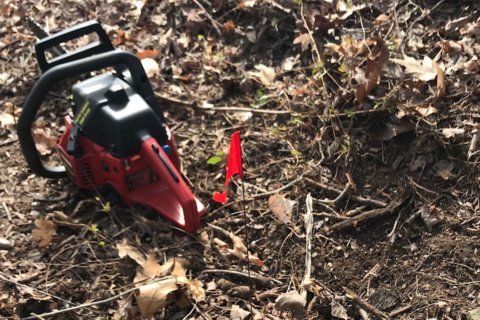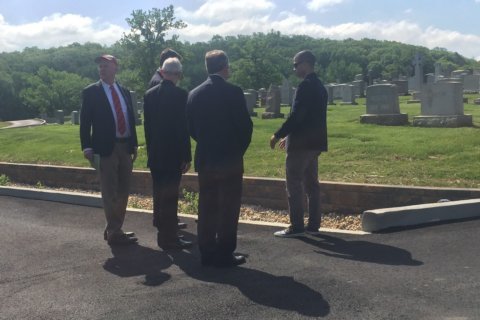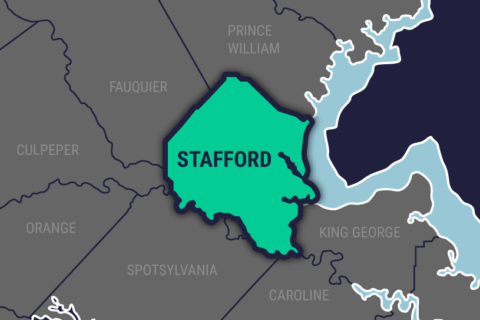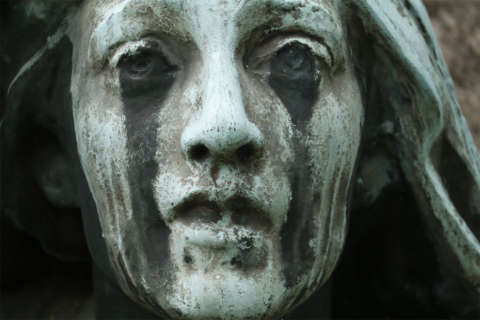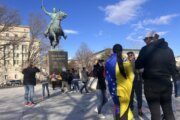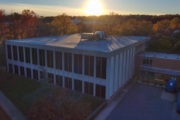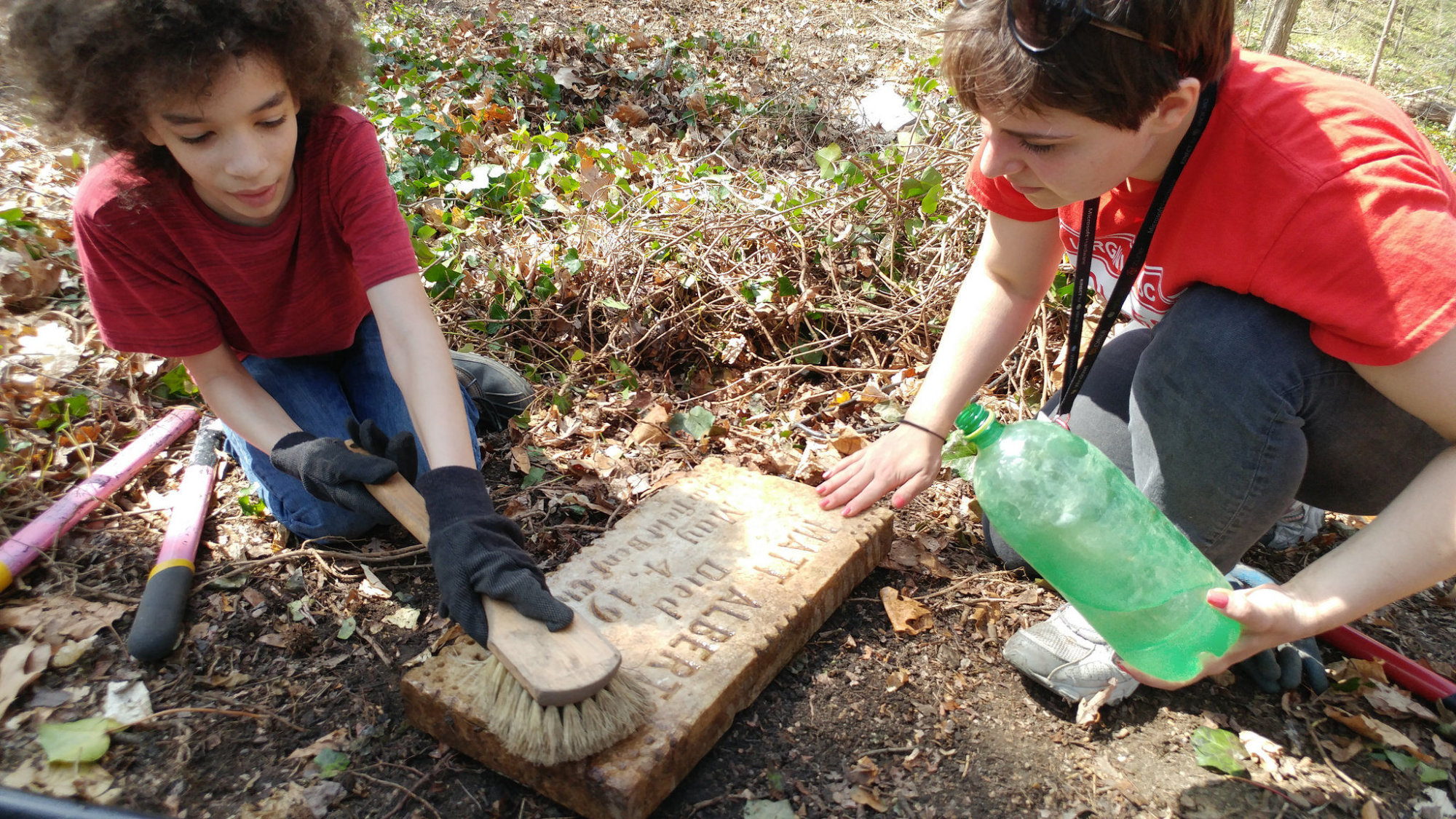
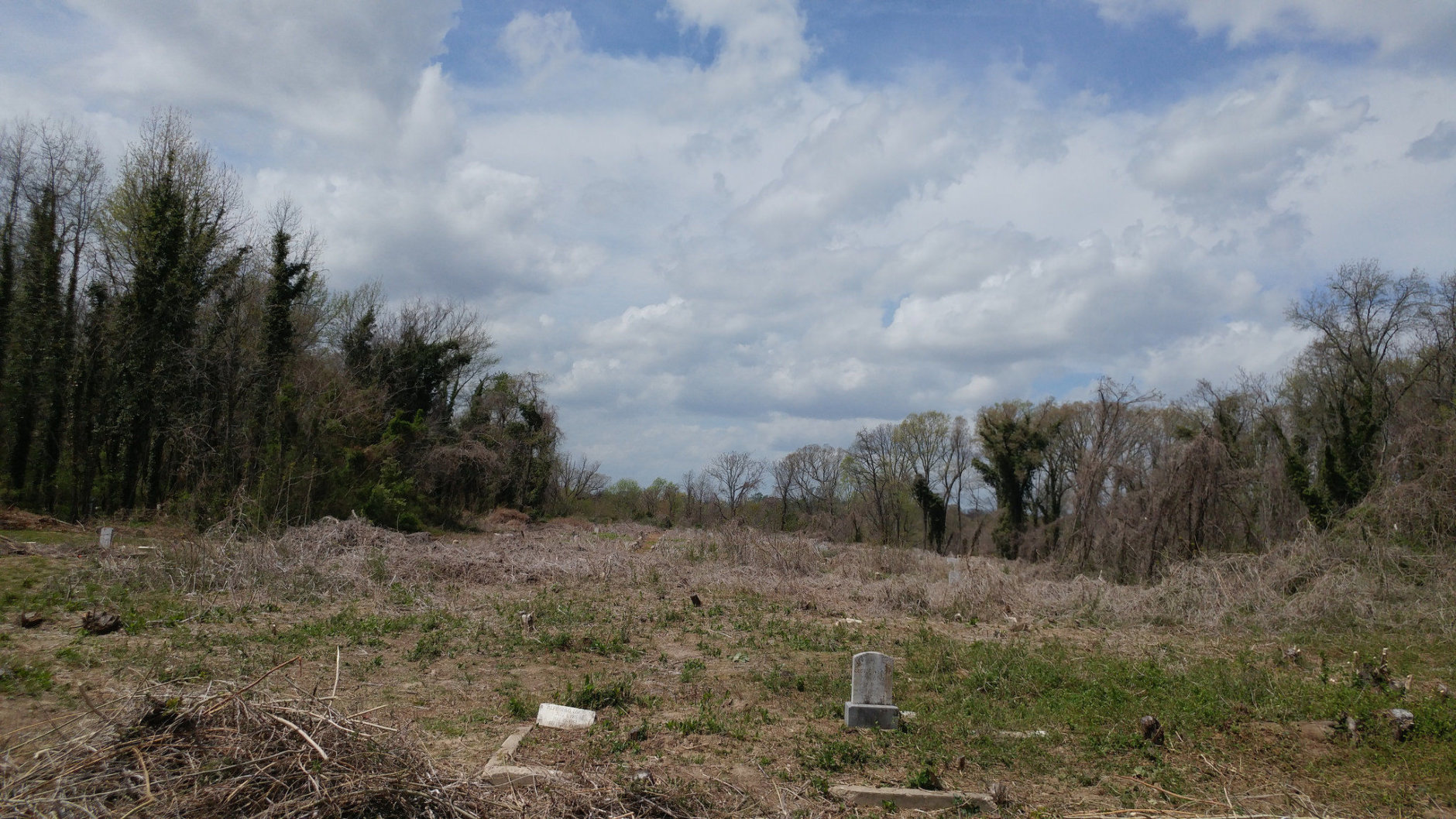
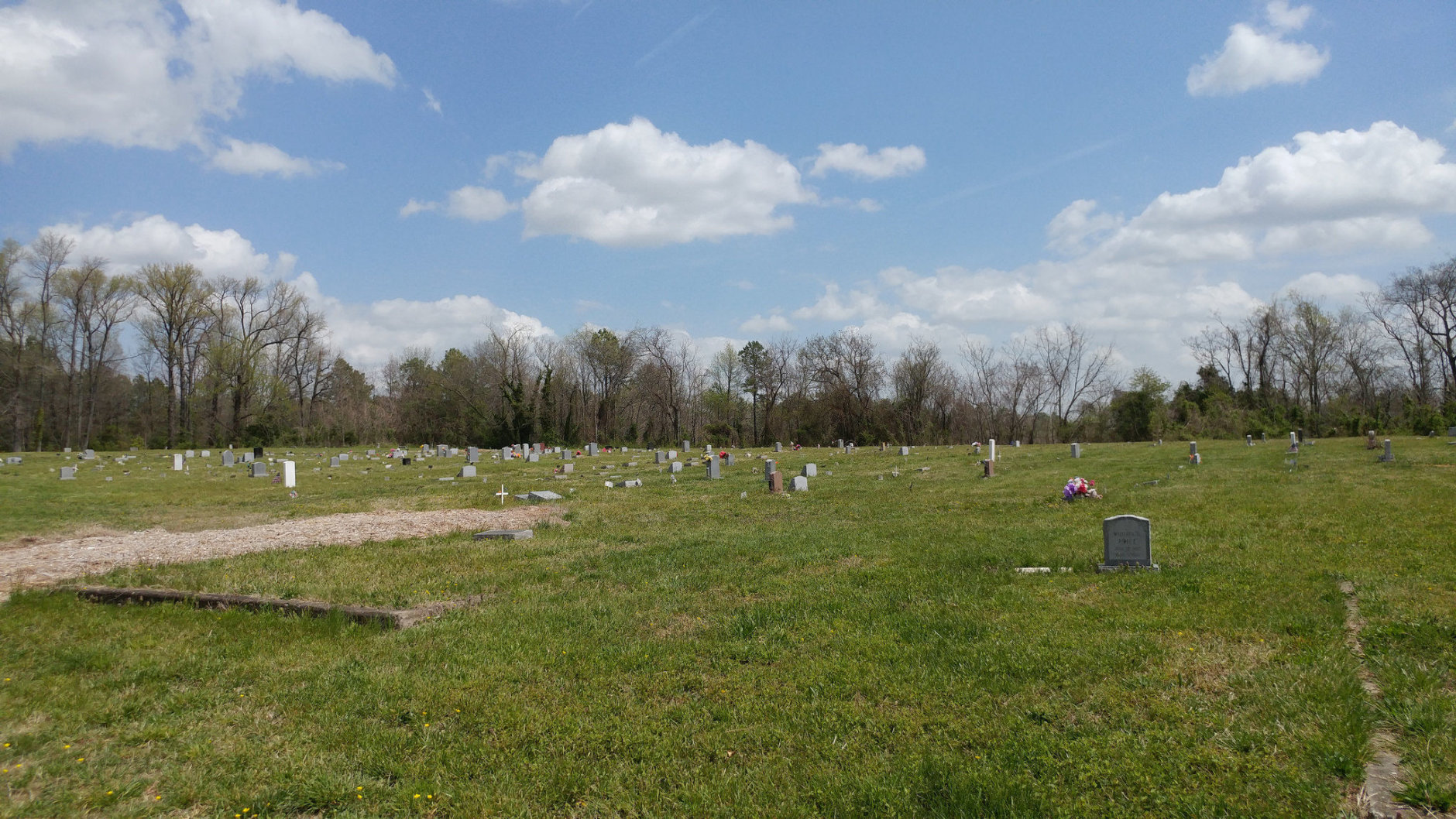
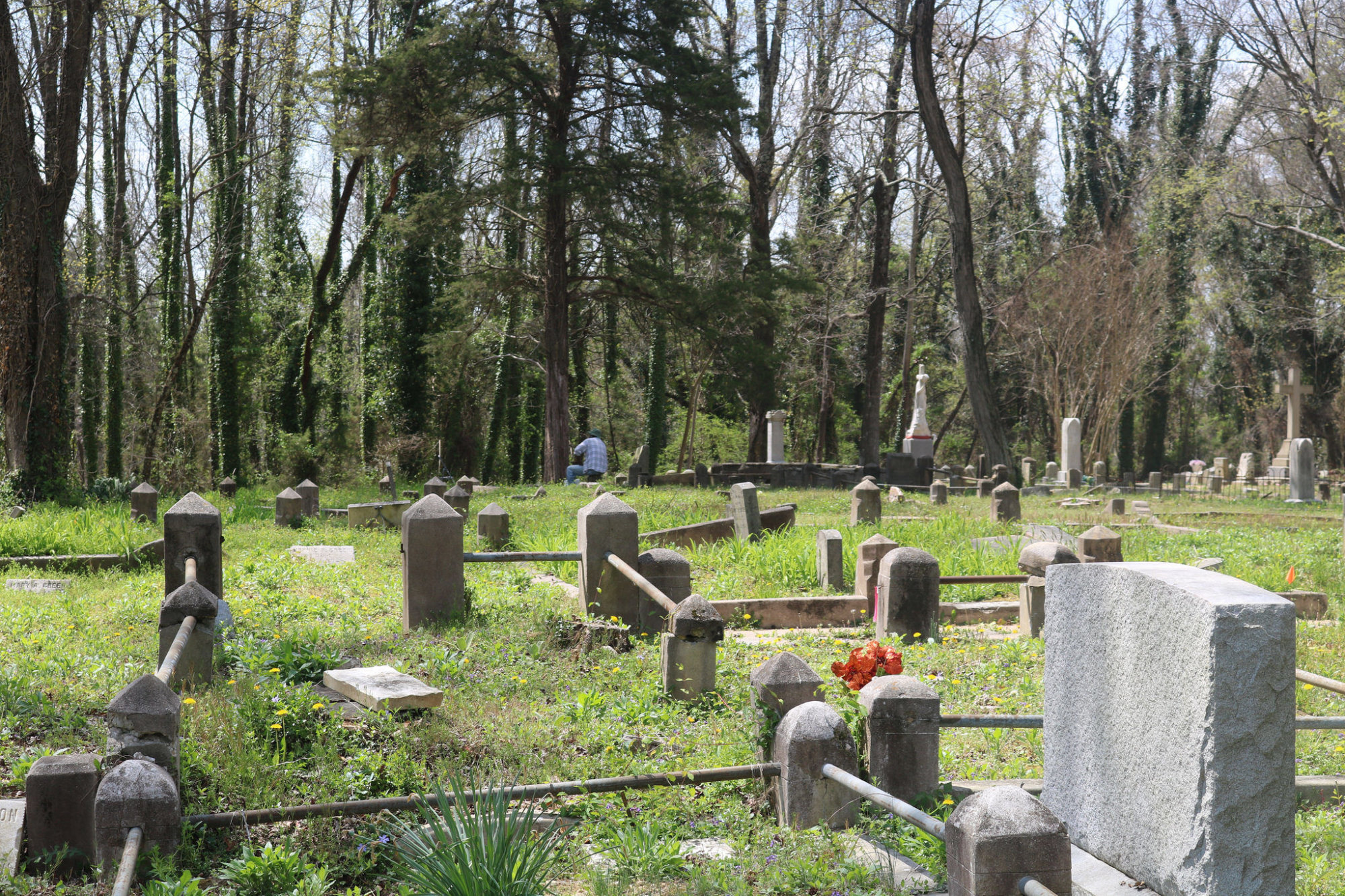
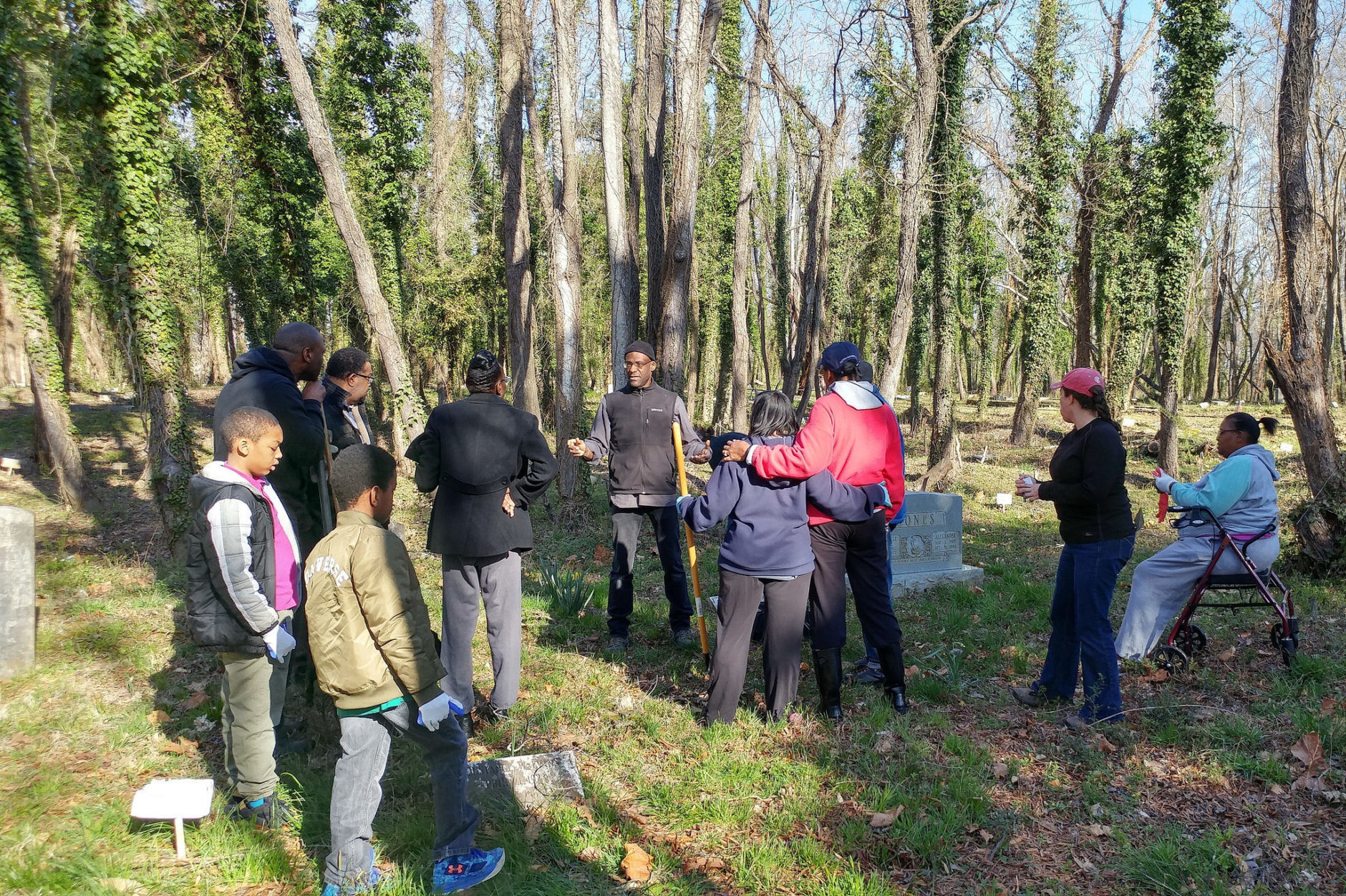
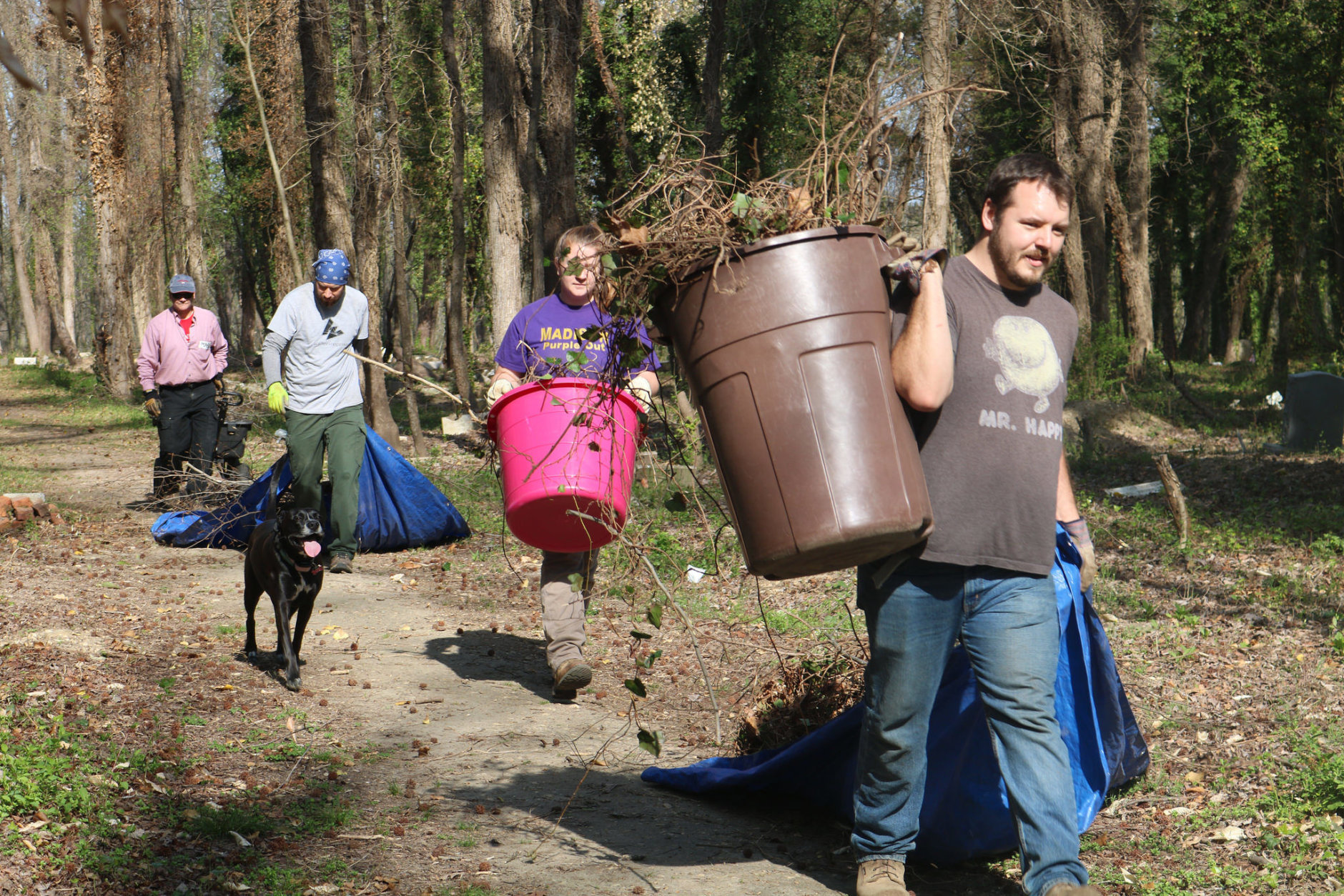
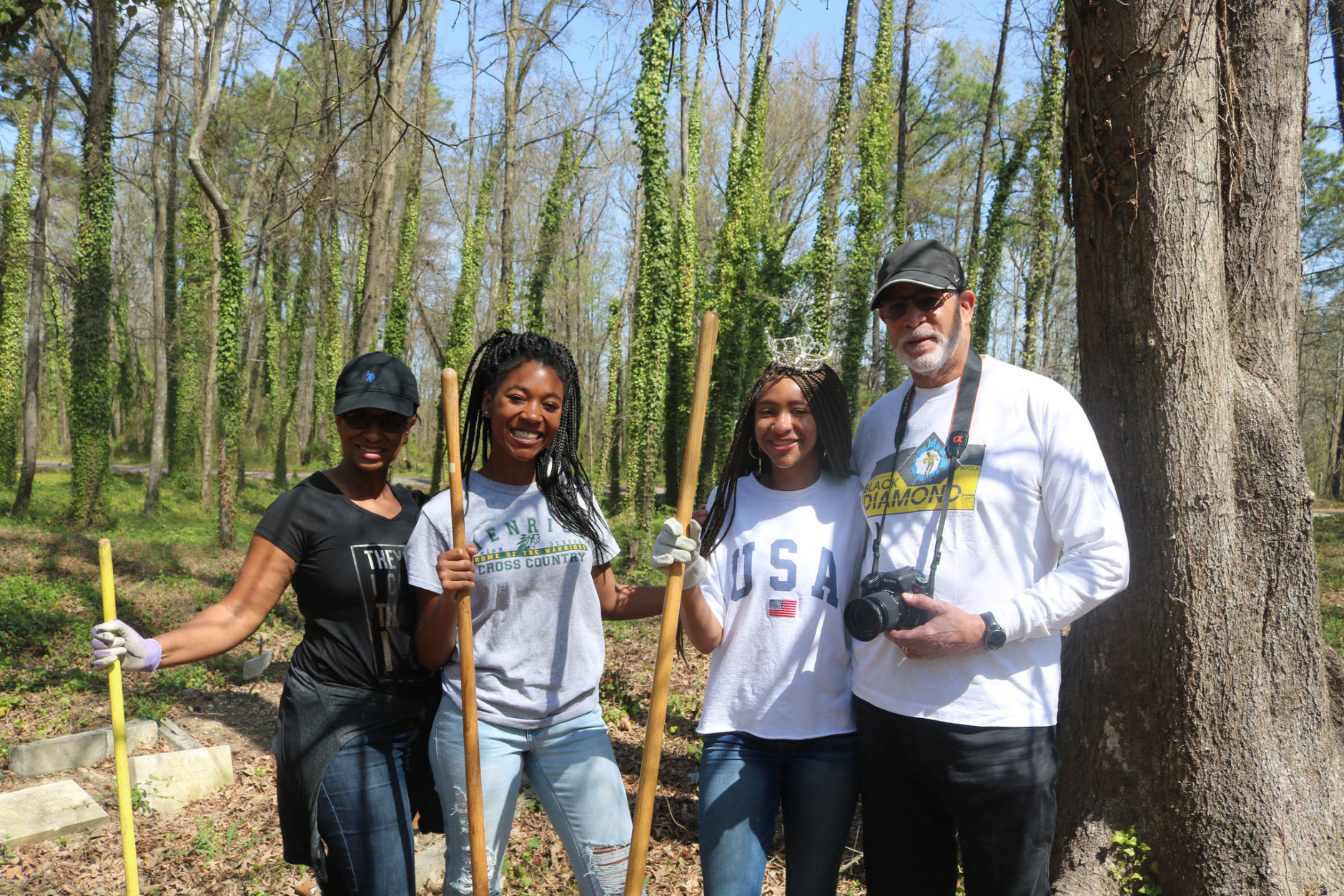
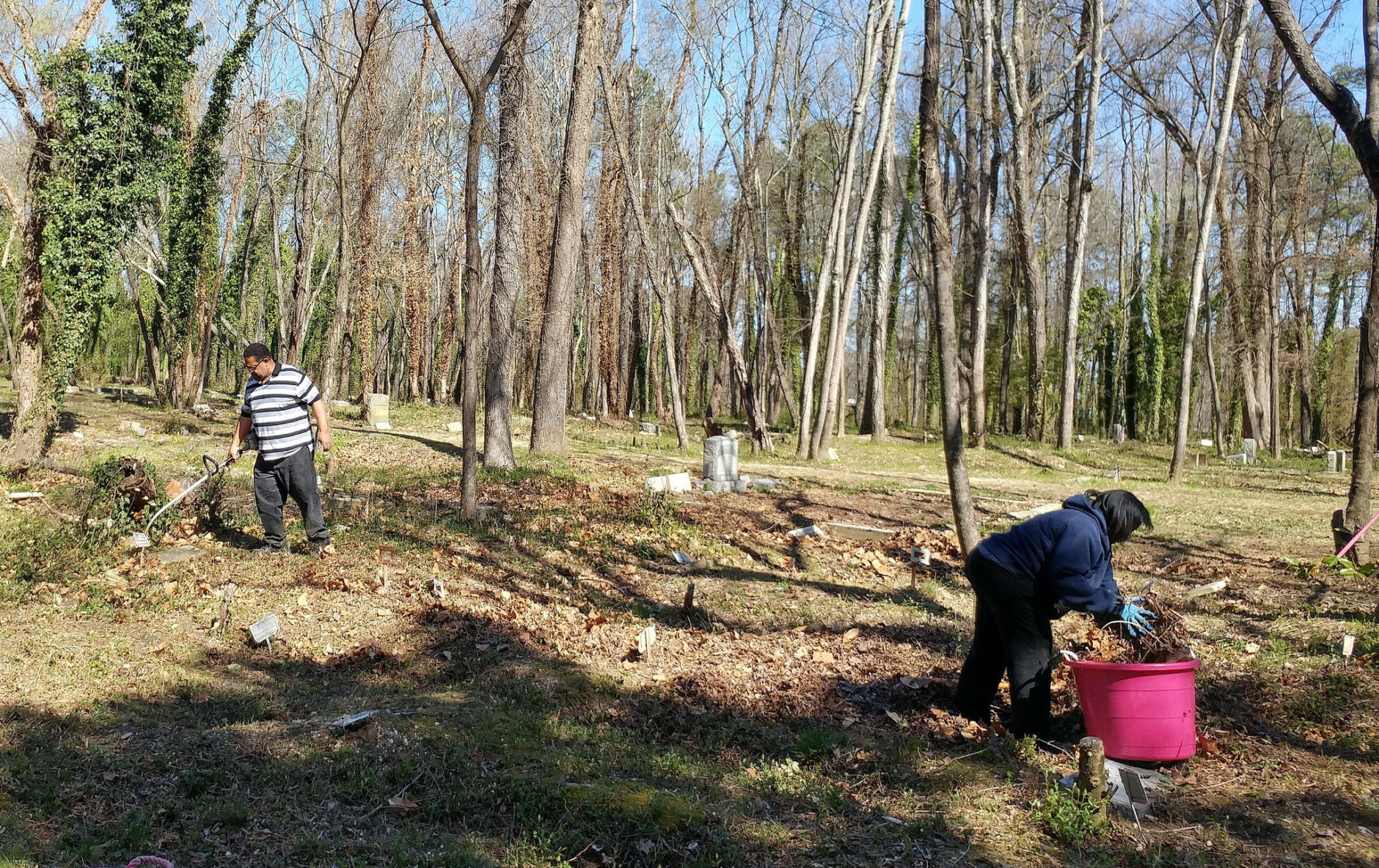
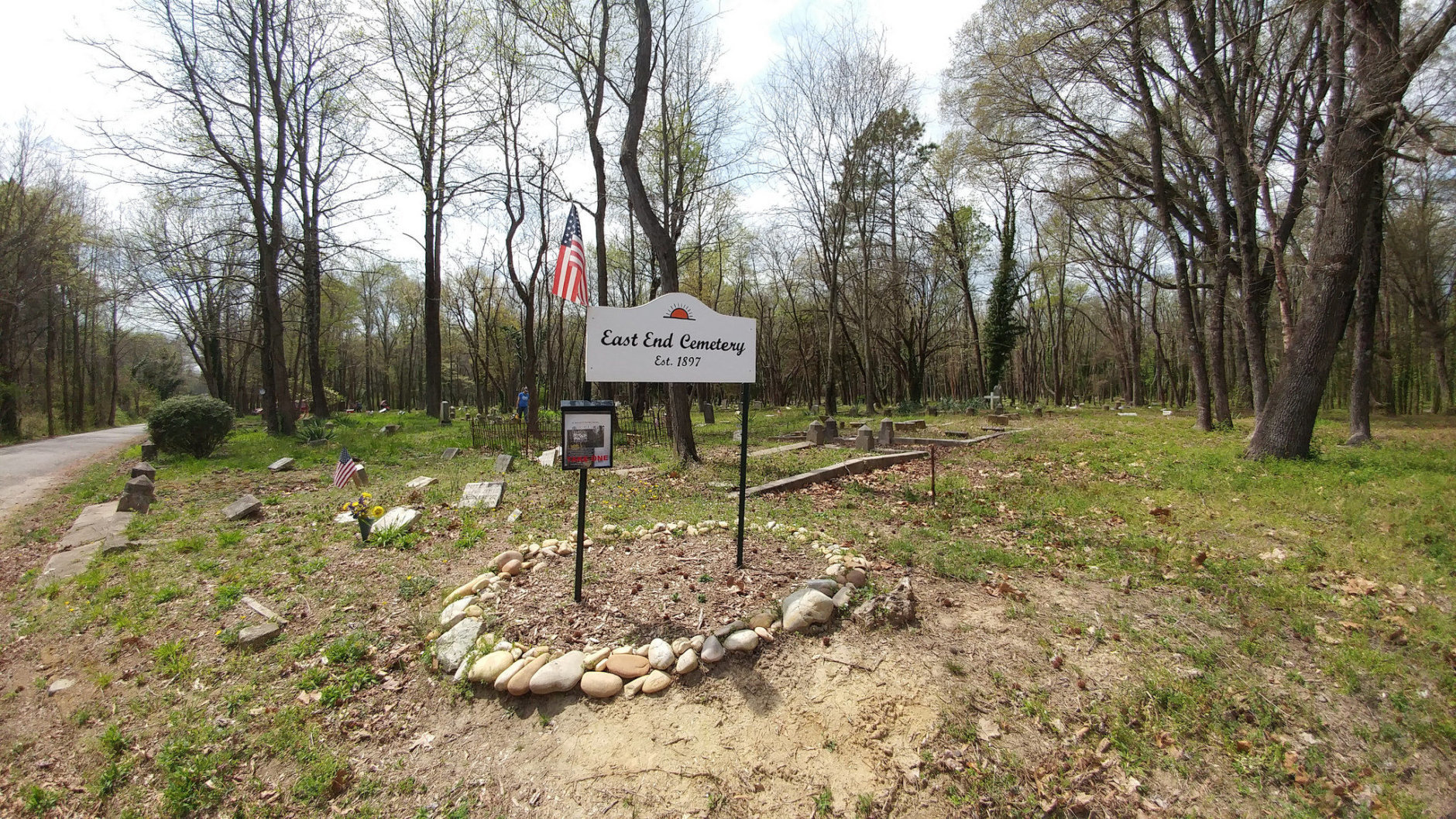
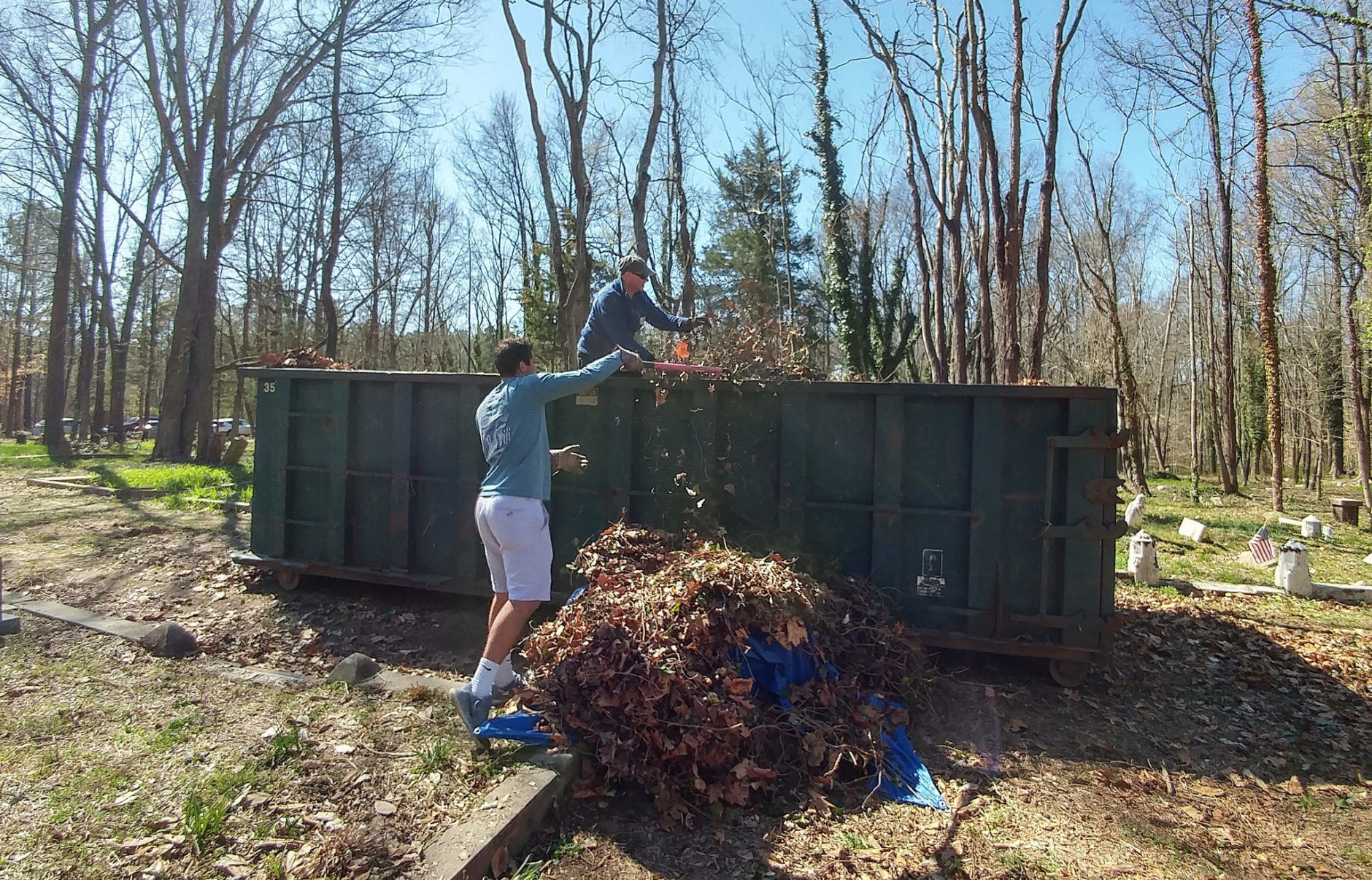

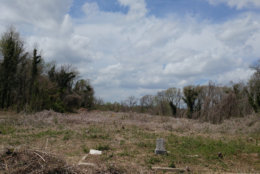
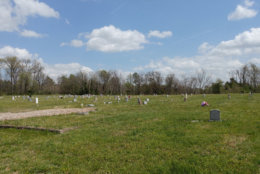

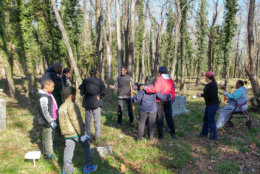
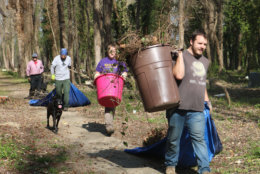
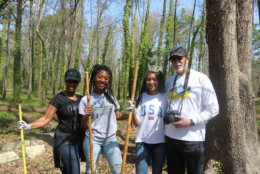
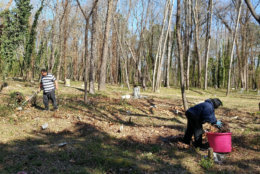
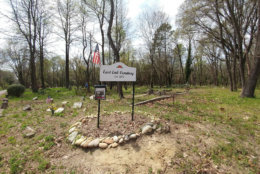
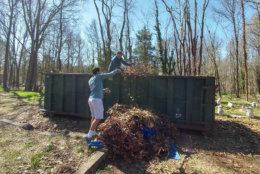
RICHMOND, Va. — On a hot Saturday in April, volunteers work under a bright sun and the noise of buzzing insects to find and remove unchecked nature and neglect from the graves of thousands of African-Americans, from everyday citizens to some of the most important leaders in local, state and national history.
The neighboring Evergreen and East End cemeteries serve as the final resting place of Maggie Walker, the first female bank president in the U.S.; John Mitchell, a newspaper publisher who risked his life to crusade for civil rights; and Rosa Dixon Bowser, founder of the Virginia State Teachers Association.
“When Black Richmond was the ‘Harlem of the South,’ when Jackson Ward was known as ‘Black Wall Street,’ these are the people who made those places,” said Brian Palmer of the Friends of East End Cemetery volunteer group.
But the state of the burial grounds can be a stark contrast to the stature of the prominent figures buried there.
Over the years, Evergreen, East End and many other black cemeteries across Virginia have fallen into disrepair, neglected and unacknowledged. More recently, concerned residents have rallied to restore, record and maintain the history of the many laid to rest.
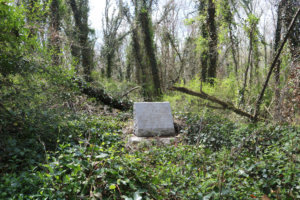
“It is not, shall we say, stunningly beautiful to someone who is more familiar with cemeteries like Hollywood (where Jefferson Davis, president of the Confederacy, is buried), or the Confederate section of Oakwood, but to us, it is remarkable,” Palmer said of the work accomplished in East End since community efforts increased in 2013.
Across the commonwealth, volunteers like Palmer labor to restore the state’s African-American cemeteries, shining a light on a part of Virginia’s history often overshadowed by the legacy of the Confederacy.
In recent years, these volunteers have seen support from a new source: the Virginia General Assembly, which has approved state funding for cleaning up and maintaining several of these cemeteries.
East End and Evergreen, on the line between Richmond and Henrico County, were the first African-American cemeteries in Virginia to receive help from the state government. In 2017, House Bill 1547 was signed into law. It allowed qualifying charitable organizations to collect maintenance funds for the two cemeteries — $5 annually for every person interred who lived between January 1800 and January 1900.
This led to a wave of similar legislation in 2018, with five bills passing the General Assembly. Most of the bills focused on African-American cemeteries in specific locales: Charlottesville, Loudon County and Portsmouth. In addition, HB 284 will extend state funding to every African-American cemetery established before 1900 and allow the caretakers of those sites to receive maintenance funds from the state.
Del. Delores McQuinn, D-Richmond, who introduced both pieces of legislation, said HB 284 was meant to clear up any ambiguities in HB 1547.
“This year, we came back to say, ‘Let’s be clear: Localities have access to these funds,’” McQuinn said.
Palmer remains ambivalent about the legislation; his group plans to meet with McQuinn to discuss it in greater detail. Friends of East End Cemetery, a nonprofit organization, had attempted to apply to receive state funding under HB 1547 but was unsuccessful.
Even without state support, members of the group remain focused on their work, a process of renewal where the number of volunteers can top 200, a donated wheelbarrow can be a huge boon and new discoveries are spotlighted on sites like FindAGrave.com.
Palmer first stepped into East End Cemetery in the summer of 2014 with his wife Erin while making a documentary. There, they encountered an armed hunting group who said they had permission to use the grounds. Palmer later said he contacted the previous owner, who contradicted this claim.
The following year, the Palmers joined in the volunteer efforts, helping to rediscover and archive the names of people buried there more than a century ago. State officials said East End Cemetery has nearly 4,900 graves that qualify for assistance and Evergreen has 2,100.
“We’ve had quite a few groups out here,” said John Shuck, a volunteer at East End and Evergreen since 2008. The two cemeteries have received help from college students, churches and Henrico County government. “Get people coming back out, you know, in ones and twos, but it all helps.”
Similar signs of progress are evident in Evergreen Cemetery, which covers more area than East End. Evergreen’s larger scale is matched by both the size of its volunteer force and signs of disrepair.
While the grounds are visited by both tour groups and mountain bikers, Dr. Ted Maris-Wolf of the EnRichmond Foundation, Evergreen’s new owner, emphasizes the work done so far remains “a shoestring operation.”
Visitors can see support for that statement: A number of memorials are broken or obscured by overgrowth, and piles of decades-old detritus, collected by workers, line some of the paths in the lower areas of the cemetery.
Maris-Wolf, formerly a professor at Virginia Union University, Randolph-Macon College and the University of Louisiana, described the potential effect of extra revenue as a “game changer, not only for us but for all the cemeteries that will receive state funding.”
Before 2017, there were attempts in the General Assembly to provide equity in state support for graveyard maintenance, but they failed. However, success has come at the municipal level, thanks largely to community organizing.
In 2015, the city of Charlottesville gave $80,000 to the Preservers of the Daughters of Zion Cemetery to support their work in the city-owned burial grounds. The group hopes to “restore the extant markers, to attempt to identify the many unknown burials and to share information about the known individuals buried at the historic cemetery,” alongside videos, audio tours and an active presence on social media.
“We are very encouraged by recent legislation to provide funding for the preservation” of their cemetery and other African-American burial grounds, the group wrote. “We are hopeful that everyone will have the opportunity to tell their stories of our shared history.”
The struggle to maintain this aspect of Virginia has been long and fraught, even as the state’s black cemeteries remain unknown to most residents of the commonwealth.
Dr. Michael Blakey, an anthropologist and professor at the College of William & Mary, describes cemeteries as “the first archaeologically observable symbolic behavior, a language of memorialization, at the origins of Homo sapiens.”
“Thus, especially in slavery but for all people, cemeteries and mortuary ritual assert our humanity — human dignity — just as their desecration represents its denial.”
This is echoed by Dr. Lynn Rainville in a 2013 article published in the Journal of Field Archaeology. Documenting her research into the topic in Albemarle County, Rainville described multiple black burial grounds throughout the area, neglected and overlooked due in part to housing development, racial shifts in local demographics leading to an absence in maintenance, vandalism and “inconsistencies in state laws.”
The result of this lack of care and gap in public awareness is evident even among the volunteers.
Robyn Young, along with her husband James Atkins and their daughter Cameron, continues to help reclaim East End as part of the Midlothian chapter of Jack & Jill of America. But she was struck by the fact “that I can’t find family members buried in these cemeteries for either of us,” despite being Richmond natives.
“I didn’t even know about this cemetery until today,” said Atkins, who has family buried at the nearby Oakwood Cemetery.
Palmer has encountered this juxtaposition in occasional interactions with the public.
“We still talk to people that come through and do the ‘Tsk, tsk — it’s a shame that the black community can’t take care of this place,’” Palmer said. “The black community, through its tax dollars, has been sustaining every Confederate monument on public property in this city.”
These problems persist at a time when Virginia’s relationship with its Confederate history has grown more contentious. Legislation seeking to remove memorials to the Confederacy has repeatedly failed, while efforts to find alternative solutions have been met with criticism and outrage.
More monuments are still to come. This summer, construction will likely begin at the state Capitol on the Virginia Women’s Memorial, which will feature Confederate Capt. Sally Louisa Tompkins among a racially diverse group of notable women.
Pastor Michele Thomas of the Loudoun Freedom Center, a group that works to spotlight and protect multiple burial grounds against corporate interests and obscurity, declared historic preservation to be “one of the key civil rights issues of our time, because it’s still governed under Jim Crow laws.”
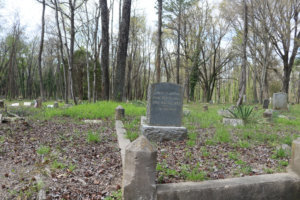
“Separate but equal is more pronounced in death than it is in life, and you can see that clearly with these properties,” Thomas said. “And so, when it is our society (that) has not evolved in our law, we’ve not evolved as a society.”
Despite such obstacles, work on African-American cemeteries continues across Virginia. The EnRichmond Foundation has partnered with Virginia Commonwealth University and other organizations in developing new techniques to improve Evergreen for both visitors and those interred, while the Friends of East End Cemetery, with help from VCU and the University of Richmond, unveiled a digital mapping of the cemetery last month.
While Palmer and his fellow volunteers still see signs of disrespect of East End from time to time, there’s a clear joy in seeing the families of those laid to rest come to the site to help ensure their ancestors’ memories are acknowledged and maintained.
“It’s inspiring, most definitely,” Palmer said, “because I think it can be kind of easy to be overwhelmed, but when you see people actually investing energy and time …”
Visiting her parents’ and grandparents’ graves for the first time since 1994, Doris Smith described the work done so far as “fantastic.”
“Last time we were here, we couldn’t even get back here, you couldn’t even see their graves,” Smith said. “I think it’s really beautiful that people are getting out, doing and keeping it up.”
Editor’s note: This story is from partners at Virginia Commonwealth University’s Capital News Service.


